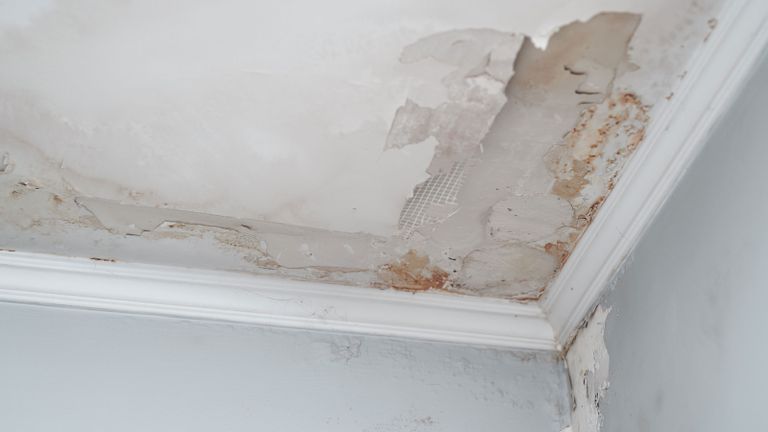6 Water Damage Reconstruction Do's and Don'ts.
6 Water Damage Reconstruction Do's and Don'ts.
Blog Article
Just about everyone is bound to have their own unique thinking about What You Can Do At Home To Prevent Fire And Water Damage.

Water provides life, water intrusion on parts where it's not intended to be can result in damage. Houses with water damages odor musty as well as old.
Water can come from lots of resources such as tropical cyclones, floodings, ruptured pipelines, leaks, as well as drain problems. In case you experience water damage, it would be good to know some safety and security preventative measures. Right here are a few standards on exactly how to take care of water damage.
Do Prioritize Residence Insurance Policy Protection
Water damage from flooding dues to hefty winds is seasonal. Nevertheless, you can additionally experience an unexpected flooding when a defective pipeline all of a sudden ruptures right into your home. It would certainly be best to have house insurance coverage that covers both disasters such as natural catastrophes, and emergency situations like broken plumbing.
Do Not Fail To Remember to Switch Off Energies
In the event of a calamity, specifically if you live in a flood-prone location, it would certainly be suggested to shut off the primary electrical circuit. This cuts off power to your whole house, protecting against electric shocks when water comes in as it is a conductor. In addition, don't forget to turn off the primary water line shutoff. When floodwaters are high, furniture will move and cause damage. Having the major valve shut off stops more damages.
Do Keep Proactive and also Heed Weather Condition Alerts
Storm floods can be very unforeseeable. If there is a background of flooding in your community, remain positive and also ready. If you live near a river, creek, or lake , listen to evacuation cautions. Get belongings from the ground floor as well as cellar, after that placed them on the highest feasible degree. Doing so lowers potential residential or commercial property damage.
Do Not Ignore the Roofing System
You can prevent rain damage if there are no openings and also leaks in your roofing system. This will certainly stop water from flowing down your wall surfaces as well as saturating your ceiling.
Do Take Notice Of Small Leaks
A burst pipe doesn't take place over night. Usually, there are warnings that indicate you have weakened pipelines in your house. You may observe bubbling paint, peeling wallpaper, water streaks, water spots, or dripping sounds behind the walls. Ultimately, this pipeline will certainly rupture. Ideally, you need to not wait on points to intensify. Have your plumbing repaired prior to it results in substantial damage.
Do Not Panic in Case of a Ruptured Pipeline
Maintaining your presence of mind is vital in a time of crisis. Panicking will only compound the trouble because it will suppress you from acting quickly. Timing is key when it comes to water damages. The longer you wait, the more damage you can anticipate. Therefore, if a pipe bursts in your house, right away shut off your major water valve to cut off the resource. Then disconnect all electric outlets in the area or shut off the circuit breaker for that part of your home. Call a trustworthy water damage reconstruction specialist for assistance.
Water gives life, water breach on components where it's not meant to be can result in damage. Homes with water damages smell musty and old.
Water damages from flood charges to hefty winds is seasonal. You may see bubbling paint, peeling wallpaper, water touches, water stains, or dripping noises behind the wall surfaces. When it comes to water damages, timing is vital.
Some Do's & Don't When Dealing with a Water Damage
DO:
Make sure the water source has been eliminated. Contact a plumber if needed. Turn off circuit breakers supplying electricity to wet areas and unplug any electronics that are on wet carpet or surfaces Remove small furniture items Remove as much excess water as possible by mopping or blotting; Use WHITE towels to blot wet carpeting Wipe water from wooden furniture after removing anything on it Remove and prop up wet upholstery cushions for even drying (check for any bleeding) Pin up curtains or furniture skirts if needed Place aluminum foil, saucers or wood blocks between furniture legs and wet carpet Turn on air conditioning for maximum drying in winter and open windows in the summer Open any drawers and cabinets affected for complete drying but do not force them open Remove any valuable art objects or paintings to a safe, dry place Open any suitcases or luggage that may have been affected to dry, preferably in sunlight Hang any fur or leather goods to dry at room temperature Punch small holes in sagging ceilings to relieve trapped water (don't forget to place pans beneath!); however, if the ceiling is sagging extremely low, stay out of the room and we'll take care of it DO NOT:
Leave wet fabrics in place; dry them as soon as possible Leave books, magazines or any other colored items on wet carpets or floor Use your household vacuum to remove water Use TV's or other electronics/appliances while standing on wet carpets or floors; especially not on wet concrete floors Turn on ceiling fixtures if the ceiling is wet Turn your heat up, unless instructed otherwise

I hope you liked our piece on 5 Home Safety Tips To Reduce The Risk Of Fire And Water Damage. Many thanks for taking a few minutes to read through our content. Liked our piece? Please share it. Help another person check it out. We recognize the value of reading our article about Safety Tips To Prevent Fire And Water Damage.
Report this page